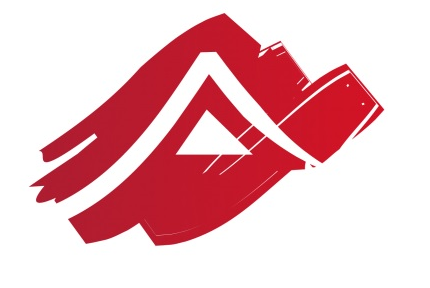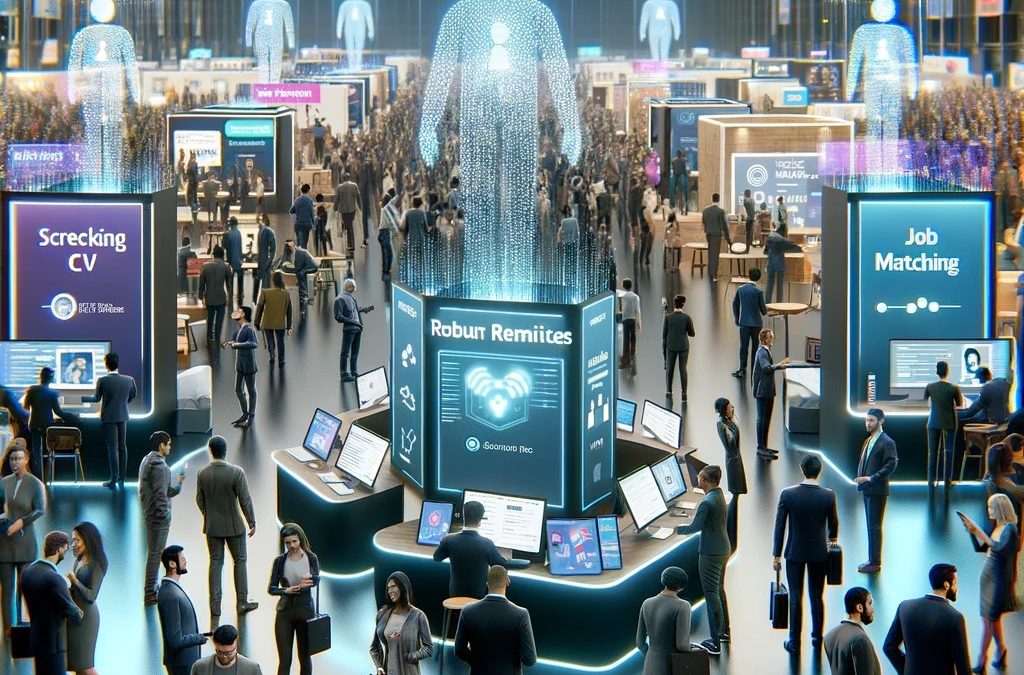In a world where technological evolution is redefining every aspect of our daily lives, the field of Human Resources is no exception to this revolution. Even if the digitalization of recruitment is not a new phenomenon, recent innovations are making it evolve even further with the emergence and growing integration of artificial intelligence (AI). In 2023, some 44% of companies claim to be working on integrating AI into their recruitment process.
Start-ups are playing a crucial role, as more and more of them are offering services that modernize traditional talent acquisition processes.
1. In the modern recruitment landscape, the quality of the CV Library remains a key resource for HR professionals, as most of the time, manual sourcing of CVs is slow…
HrFlow.AI, an innovative start-up, has designed a technology based on several layers of artificial intelligence to efficiently exploit the CVs available in a corporate CV library.
Automating CV candidates’ data collection from various sources such as Job boards, mailboxes, websites, forms…., leverage AI modules to clean, structure, normalize, transform, update, and enrich these Talent data and create scenarios to increase candidates’ interest is very efficient and provides better conversion rates.
Once established, the “scoring” process consolidates the enriched structured data, calculating the degree of compatibility between the proposed position and the candidate’s profile.
On his side, CleverConnect, which has set up several platforms to meet all company’s recruitment needs, has also implemented intelligent CV scoring, based on the same principle.
In complement, there is a concept used by MeteoJob which, instead of looking for the CV that matches a job vacancy, looks for the job vacancy that matches the CV: it is called “the matching”. The aim here is to make the application more efficient for the candidate, with a positive long-term result for the company, which will select CVs that perfectly match its offers.
MeteoJob records a candidate’s profile and career wishes, then compares them with all the new job offers listed in the database. Next, the matching algorithm ranks the offers by relevance from 0 to 5 stars, according to their match with the profile. Finally, job offers with between 4 and 5 stars are e-mailed directly to candidates. HrFlow.AI also offers a similar approach with its solution Talent Copilot allowing users to browse through a curated list of job opportunities that match their skills, preferences, and goals, and to apply with one click.
In a concept similar to the CV library, we can highlight HireSweet, which offers a platform of candidates specializing in Tech, where recruiters can come and look for them. Part of their database comes from a team of recruitment consultants who carefully source the most relevant candidates on the internet. The other part comes from the fact that the company has managed to develop a strong reputation in the Tech world, so many developers themselves come to register on the platform and offer their profiles.
HireEZ also offers a highly-developed CV library facilitating highly targeted searches for niche or hard-to-find profiles, and to do so draws its information from the entire open web to access, for example, medical appointment scheduling platforms, university search engines or technology forums. They use customized clearing filters for each profile specialization, and offer hundreds of them, with the aim of being as precise as possible in the search. They have developed 4 main software programs that help them find their candidates: Tech Sourcing, Healthcare Sourcing, Scholar Sourcing and Diversity Sourcing. This enables them to offer a global data source, with profiles from all over the world.
2. In addition to the development of various sourcing methods through artificial intelligence, we have seen the digitization of another recruitment technique with the cooptation.
Managing cooptation process can be complex, requiring precise tracking of applications from internal recommendations and effective communication with co-opters. To meet these challenges, recruitment solutions such as Basile, Keycoopt, CleverConnect or Trusty are designed to facilitate the management and optimization of co-optation programs, offering recruiters a powerful tool to maximize this recruitment method.
Employees benefit from an intuitive co-optation portal, available on the web and mobile devices, giving them easy access to open job offers and associated rewards. Thanks to a simple, user-friendly interface, they can recommend candidates at the click of a button.
On top of that, they can track the progress of recommended candidates in real time, from application to eventual hiring, and share job offers on their social networks.
3. Talent acquisition has also used programmatic advertising or social media with startups like GoldenBees, Seeqle and Bonanza.
By exploiting targeting technologies and delivering ads in the form of contextual ads on various online media such as social networks, search engines and major aggregators like LinkedIn, they have been able to turn web users into engaged candidates, encouraging them to apply on recruiters’ career sites.
The advantage of this method is to disseminate job offers in a targeted way across the entire web, reaching thousands of potential candidates while keeping advertising costs under control. The transparency offered by this approach enables exhaustive tracking of campaign performance, giving recruiters a detailed view of the effectiveness of each ad.
The impact of programmatic advertising on recruitment could be interesting on a volume-based approach providing recruiters with relevant applications while optimizing the costs and performance of recruitment campaigns.
4. Having analyzed the impact of new technologies on the search for talent, it is important to observe how AI has profoundly altered the evaluation and selection of candidates during job interviews. One of the pioneers of this evolution is HireVue, which has introduced advanced algorithms to evaluate candidates during their interviews.
This process takes place online, via video interviews where candidates answer a series of predefined questions under the watchful eye of their webcam.
HireVue’s algorithms meticulously analyze these videos, its artificial intelligence technologies using around 350 distinct criteria to analyze the way candidates speak, including sentence length, language level, use of the active or passive form, among others.
As for body language, the algorithms scrutinize facial expressions, eyebrow movements and smiling tendencies, to decode the candidate’s emotions or personality traits.
Applicants are evaluated and rated according to how similar their behavior is to that of reference employees.
This approach, incorporating comparative behavioral data, aims to improve the candidate’s evaluation and identify those with the closest profile to the company’s top performers.
In 2024, the growing use of AI and Technology based solutions transforms traditional processes, offering innovative solutions for talent search and sourcing, assessment, and selection. By merging AI with human expertise, these technologies foster collaboration between man and machine, leading to more efficient, agile recruitment processes – especially automating some tasks of writing Job Descriptions, sourcing, selection, multichannel messages sending, assessment during job interviews – tailored to the needs of companies and candidates alike. These solutions improving recruitment processes and resources, professionals can devote more time to high value-added tasks, such as human interaction, behavioral analysis, negotiations of contracts and strategic decision-making.
A. RAHIMALLY
Student at ESSEC Business School



